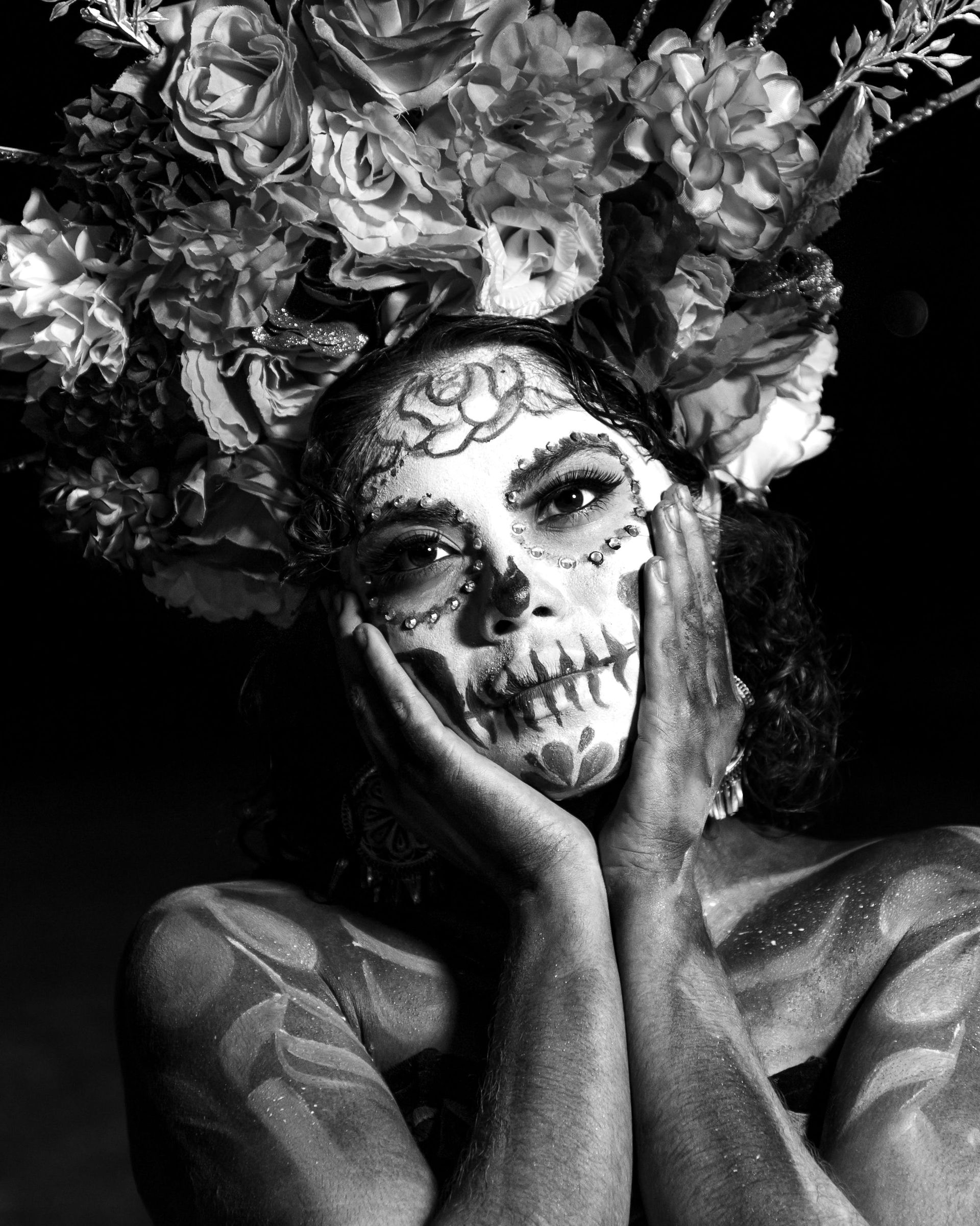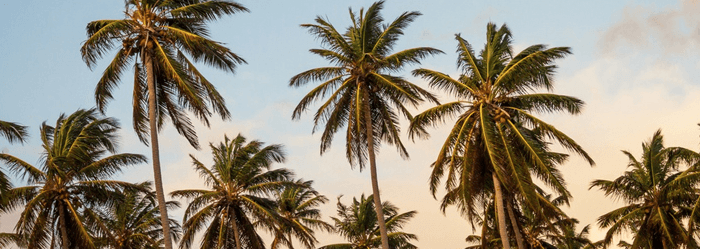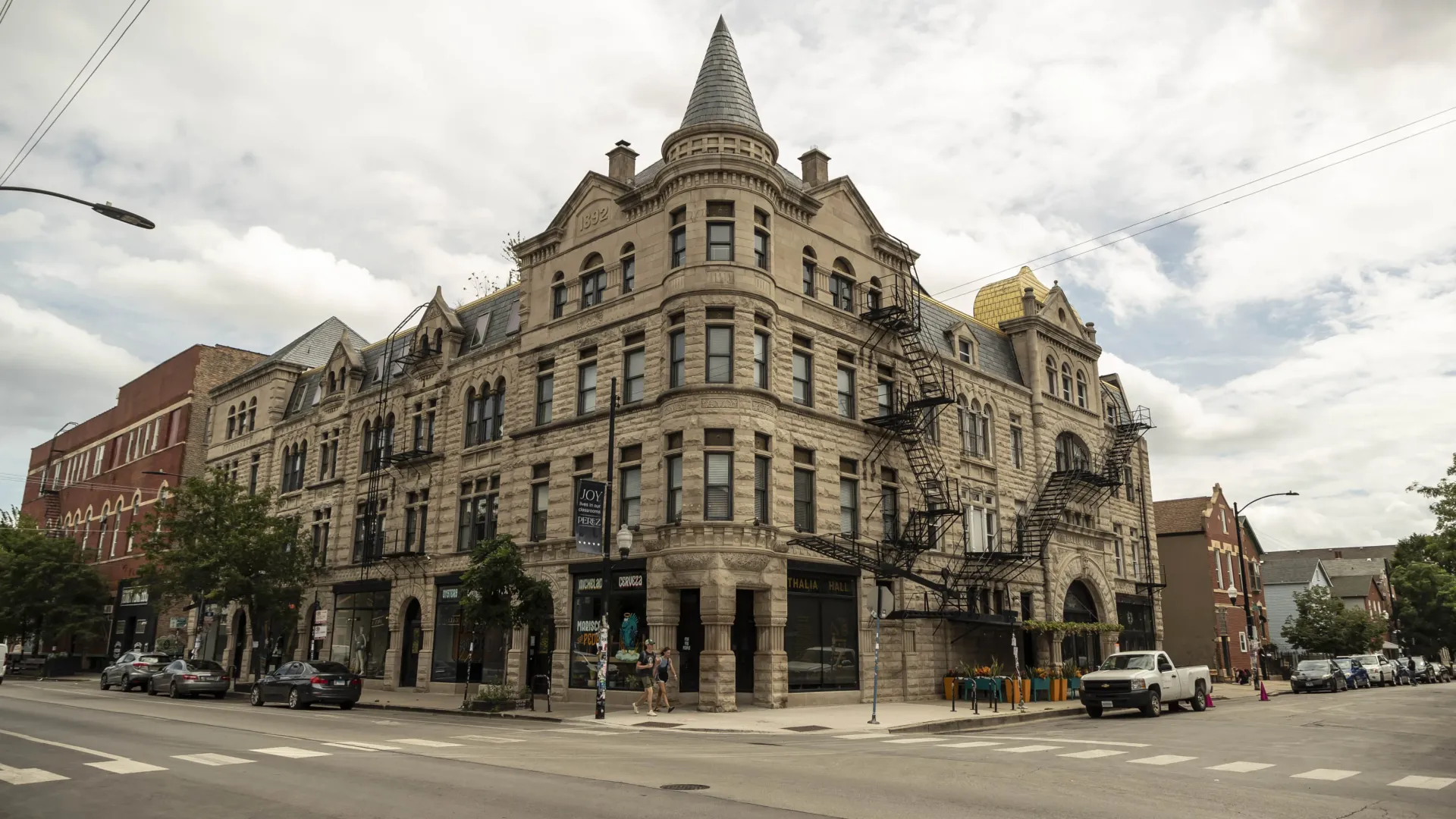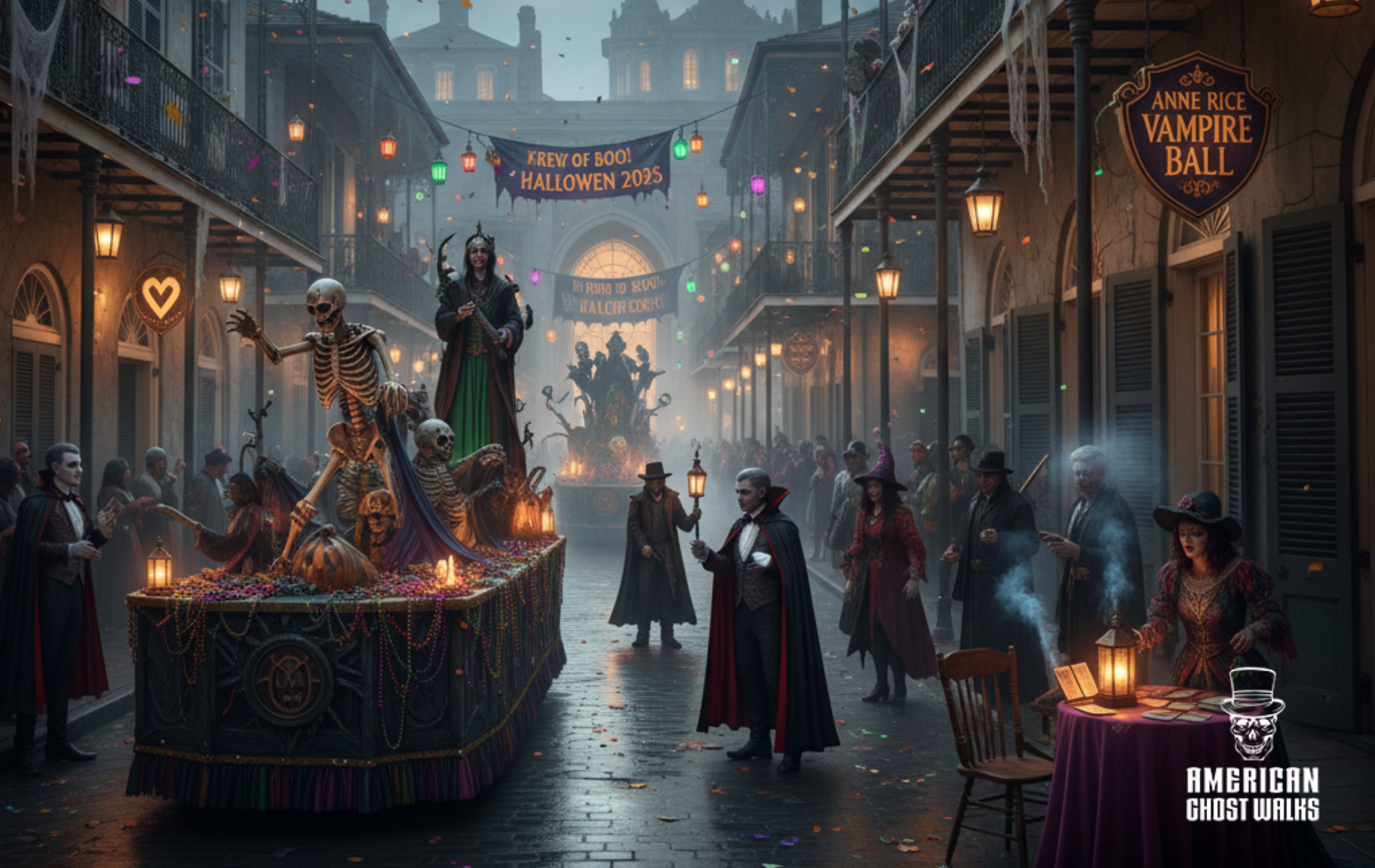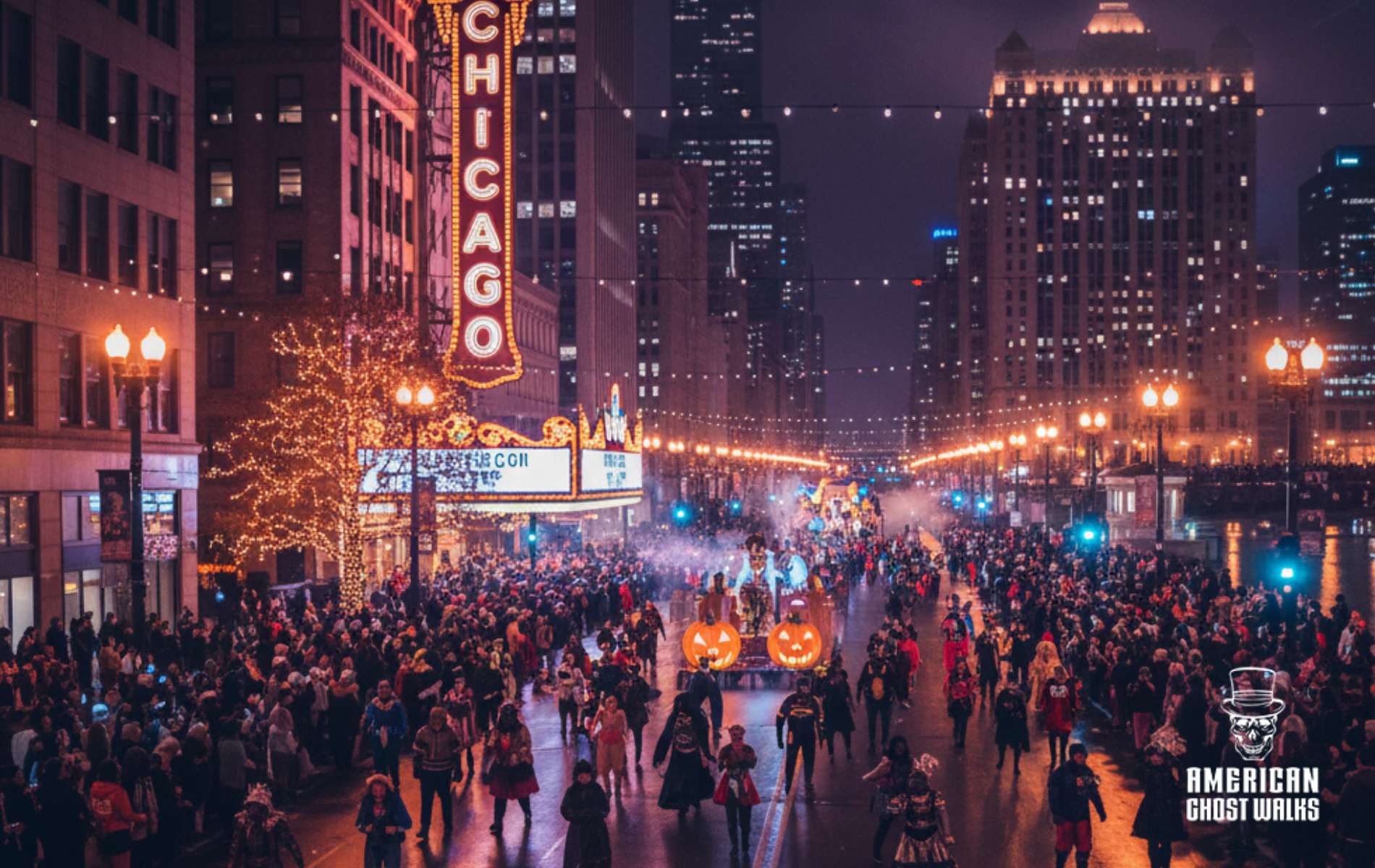Day of the Dead (Día de Los Muertos)

Day of the Dead, or Día de los Muertos, is a vibrant celebration of the departed, widely observed in Mexico and Latin America. It traces its roots to the Aztecs and other native peoples of central and southern Mexico who recognized a pantheon of gods, including Mictecacihuatl, the goddess of death and the underworld. With the arrival of Spanish conquistadores in the 16th century, these indigenous beliefs and practices began to merge with Catholicism.
The Spaniards brought with them their own traditions, including All Saints' Day and All Souls' Day on November 1st and 2nd, respectively. All Souls' Day is a long-standing Catholic tradition that involves prayers and remembrance for all departed souls, particularly those in Purgatory who need to purge their sins before moving on. It's believed that prayers can aid these souls in getting to Heaven more quickly. In the longstanding Christian Missionary way, the Spanish found ways to blend the Aztec traditions with Christian holidays. The Day of the Dead became a profound fusion of the Aztec ritualistic honor of the deceased with the Catholic tradition of prayer for souls in the afterlife. Over time, these two traditions fused together to create the Día de los Muertos we know today.
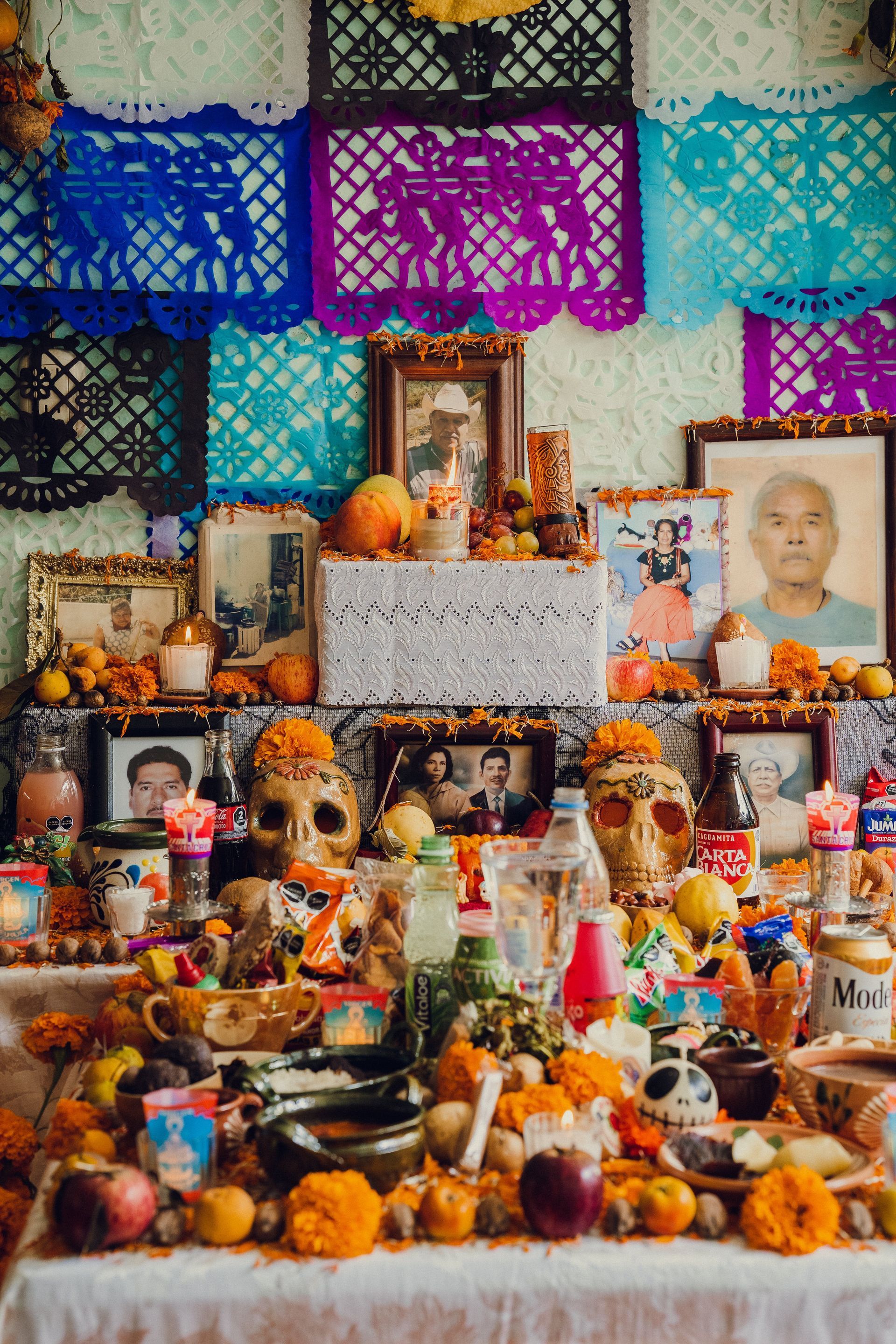
The Altar or Ofrenda
At the heart of this holiday is the creation of an altar, or *ofrenda*, a sort of shrine that families construct to honor and remember their departed ancestors and family members. These altars are deeply personal and are often the focal point of the holiday's celebrations.
Altars can vary greatly in their complexity, ranging from simple designs to highly elaborate displays. Despite this variability, they usually reflect the four elements: earth, water, fire, and air. It is also common to construct the altars with different levels, symbolizing heaven, earth, and purgatory. The family decorates the altar with candles, bright colors, and meaningful items, turning it into a visually captivating centerpiece.
Each altar is adorned with common items, each carrying a symbolic meaning. Candles, which symbolize hope and faith, are used to illuminate the way for visiting souls. Bread known as *Pan de Muerto*, representing gifts from the earth and hospitality, is another essential element. Marigold flowers, or *cempasúchil*, are strewn around the altar, their vibrant color and strong scent creating a path to guide visiting souls to the altar.
Religious symbols, a nod to the holiday's Catholic roots, are also common. They may include images of saints, Jesus, the Virgin Mary, rosaries, and crucifixes. Cut-out tissue paper, or *papel picado*, and sugar skulls, which represent the presence of death, are also frequently found on altars.
Families often include personal objects that belonged to the deceased or reflect their interests. These may include toys for children, objects associated with the person’s profession, or items related to a hobby they enjoyed. Other elements on the altar may include a glass of water, salt, photographs, a plate of food, drinks, a woven mat or petate, fruits, and sometimes an arc decorated with *flores de cempasúchil* or lights.
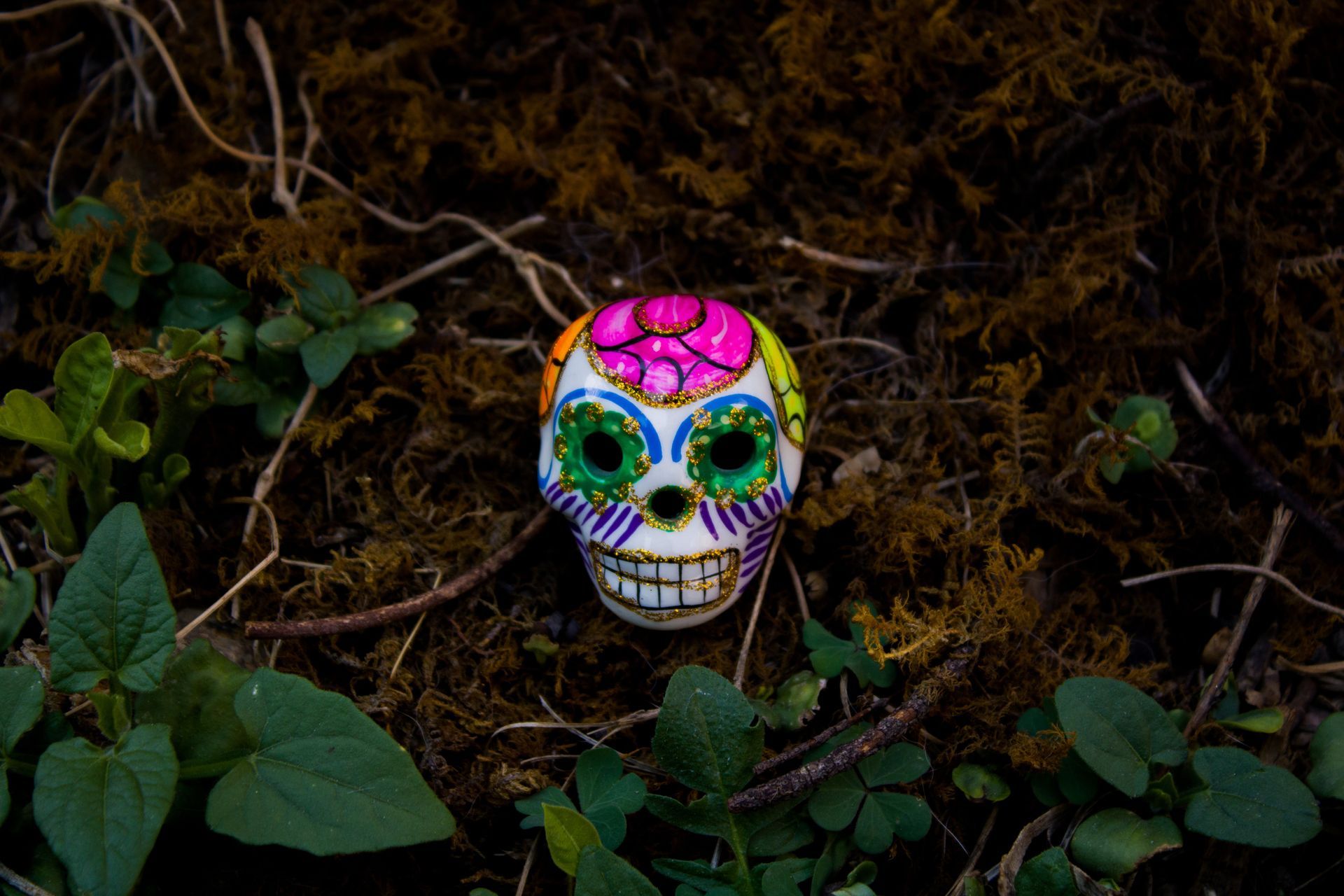
Calaveras
Calaveras, commonly known as sugar skulls, are a significant and prominent symbol in Day of the Dead, or Día de los Muertos, celebrations. Their primary role is to represent the spirits of the loved ones who have passed away, serving as a tangible connection to the deceased during the festivities.
These sugar skulls are unique and artistic creations, often decorated with vibrant colors and intricate designs. Each calavera is a creative expression, specifically crafted to reflect the personality, taste, or preferences of the deceased individual being remembered. They might be adorned with patterns, symbols, or elements that were significant to the person in life, making each sugar skull a personalized tribute.
Additionally, calaveras are not just placed on home altars, but they also feature prominently in public displays and processions. They are often carried in parades, depicted in artwork, and even worn as part of costumes, further emphasizing their important role in the Day of the Dead festivities.
The ubiquity of calaveras during Día de los Muertos serves as a constant reminder of the holiday's core message: death is a natural part of life, to be embraced and celebrated rather than feared. This perspective on death, embodied by the cheerful and vibrant calaveras, is a key aspect of the Day of the Dead's unique approach to mourning and remembrance.
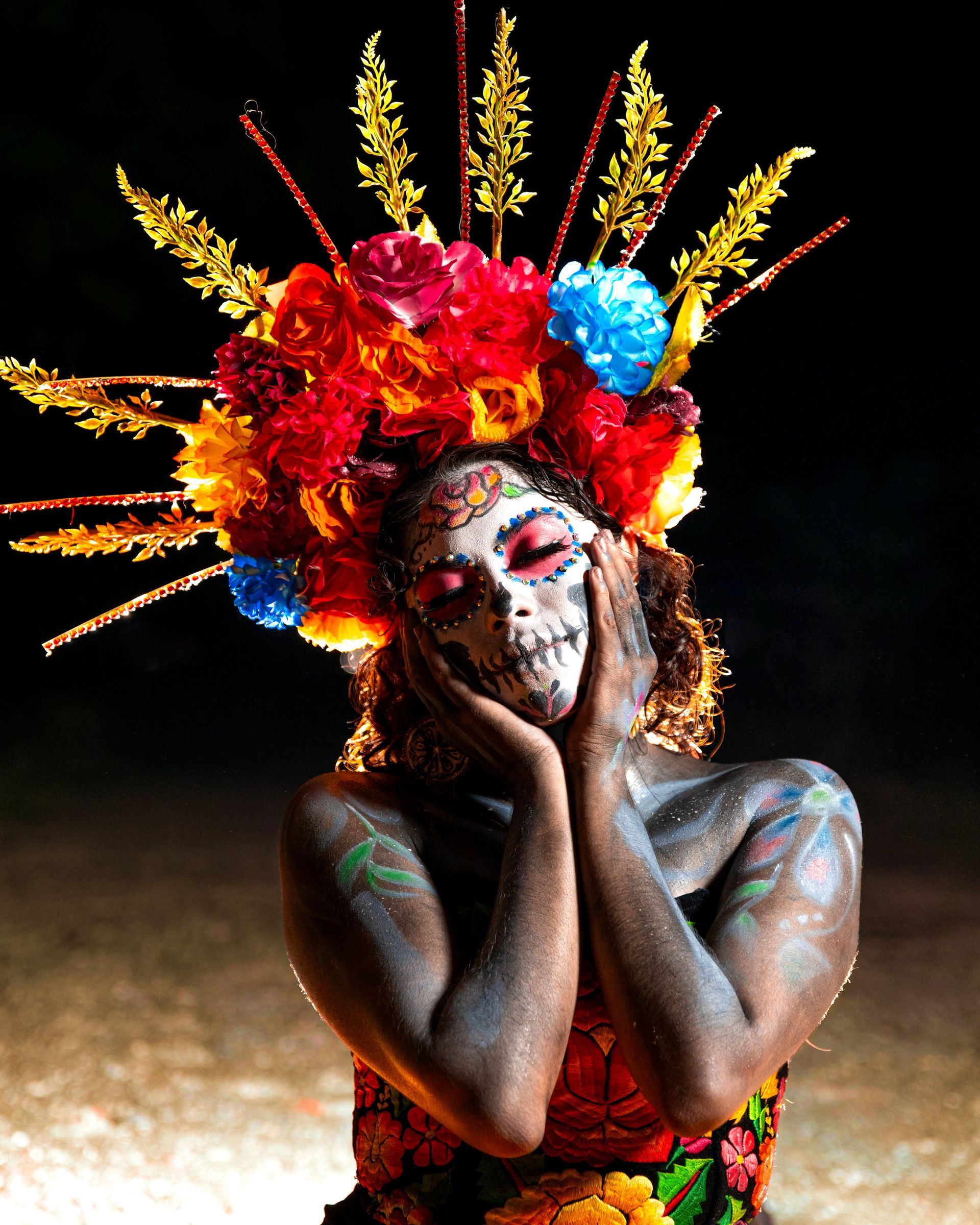
In New Orleans
The 2023 Day of the Dead parade in New Orleans will honor its late founder, Roberto Carrillo, who passed away in April. The parade is organized by the Krewe de Mayahuel, which has successfully blended Mexican Day of the Dead traditions with New Orleans street parade culture. The annual event, taking place on November 2, features a somber procession dedicated to the recently deceased. It's also a joyous affirmation of life, involving a candlelit march, a giant skeleton puppet, a rolling Mesoamerican pyramid adorned with photos of the recently deceased, and participants in traditional costumes. The parade is a cultural touchstone for New Orleans' Mexican community, providing a way for those who can't return to Mexico to celebrate the tradition. This year's parade is expected to be more elaborate, with more vendors, music, and children's activities. Carrillo's memory will be honored with photos and a moment of silence.
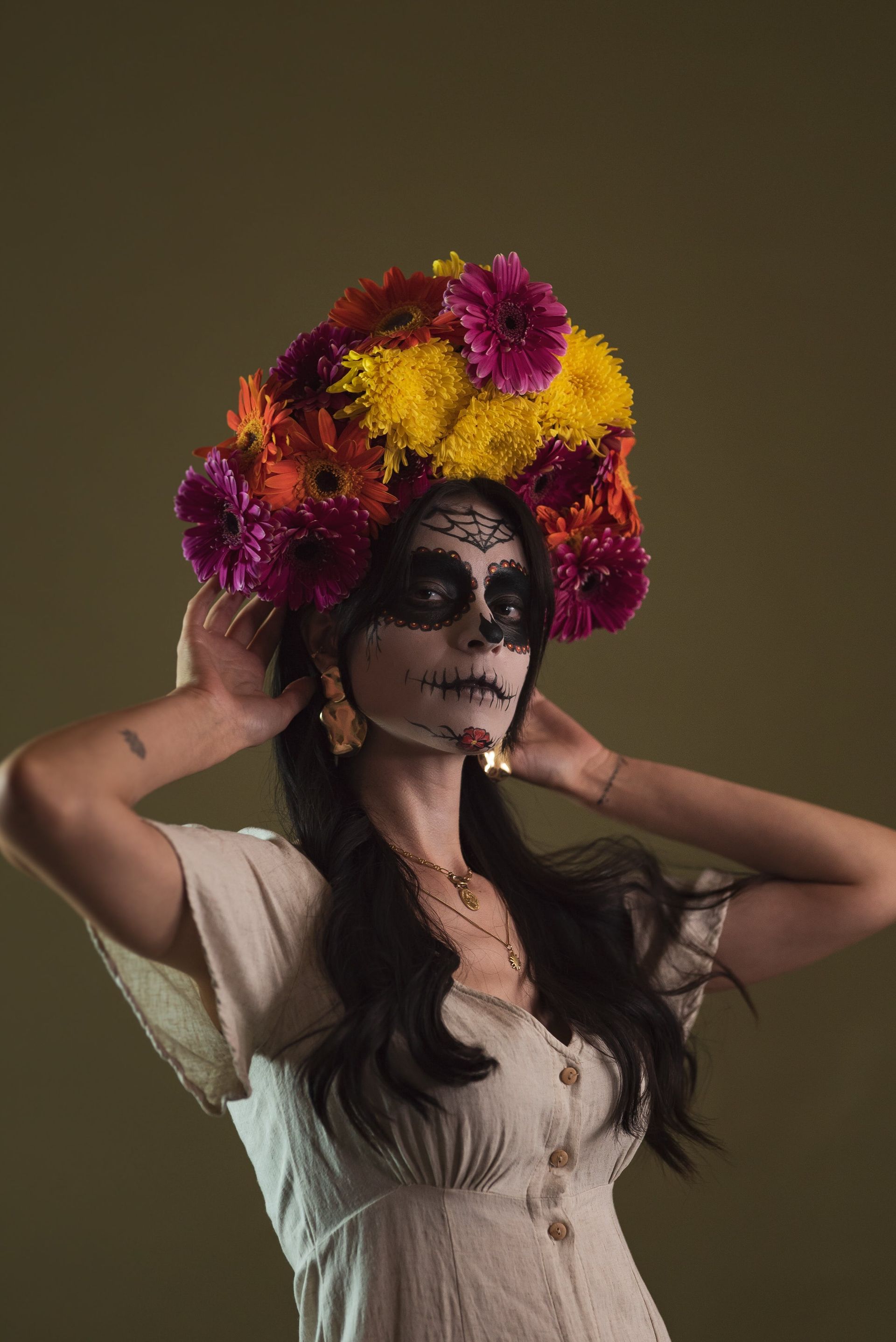
In Chicago
In Chicago, the Day of the Dead is a cherished holiday, particularly among the city's Mexican American communities, with many local events and traditions. One of the central parts of the celebration is the creation of altars, which are offerings to the spirits of the deceased. These altars are adorned with photos of loved ones, marigold flowers, water, sweet bread, and other personal items.
The tradition is particularly strong in Chicago's Little Village and Pilsen neighborhoods, which host a variety of Day of the Dead activities, events, and celebrations. These include exhibitions at the National Museum of Mexican Art, live music, art activities, and memorial altars. There are also unique experiences to be had, such as the Brookfield Zoo's Dia de los Muertos celebration and the Carrera de los Muertos (Race of the Dead) in Pilsen.
In addition to these events, Chicago's Day of the Dead tradition includes murals, giant ofrendas, and the opportunity to shop for Day of the Dead accessories and sweet bread (pan de muertos).
Dive deeper into the mysterious world of hauntings with our curated collection of paranormal investigations and ghostly encounters. Read more stories like this in “Ghosts of Lincoln Park: A Chicago Hauntings Companion” by Ursula Bielski, a book of downtown Chicago ghost stories written by our own American Ghost Walks team. Click here for more.
Dive deeper into the mysterious world of hauntings with our curated collection of paranormal investigations and ghostly encounters. Read more stories like this in “The Original Chicago Hauntings Companion” by Ursula Bielski, a book of Chicago ghost stories written by our own American Ghost Walks team. Click here for more.
Are you fascinated by the supernatural and craving more spine-tingling tales? Whether you're a skeptic seeking evidence or a believer looking for your next supernatural fix; "American Ghost Books" offers everything from historical haunted locations to firsthand accounts of paranormal experiences. Each book has been carefully selected to provide authentic, well-researched stories that will keep you turning pages well into the night. Don't let your curiosity about the supernatural remain unsatisfied – explore our collection and find your next ghostly adventure today!
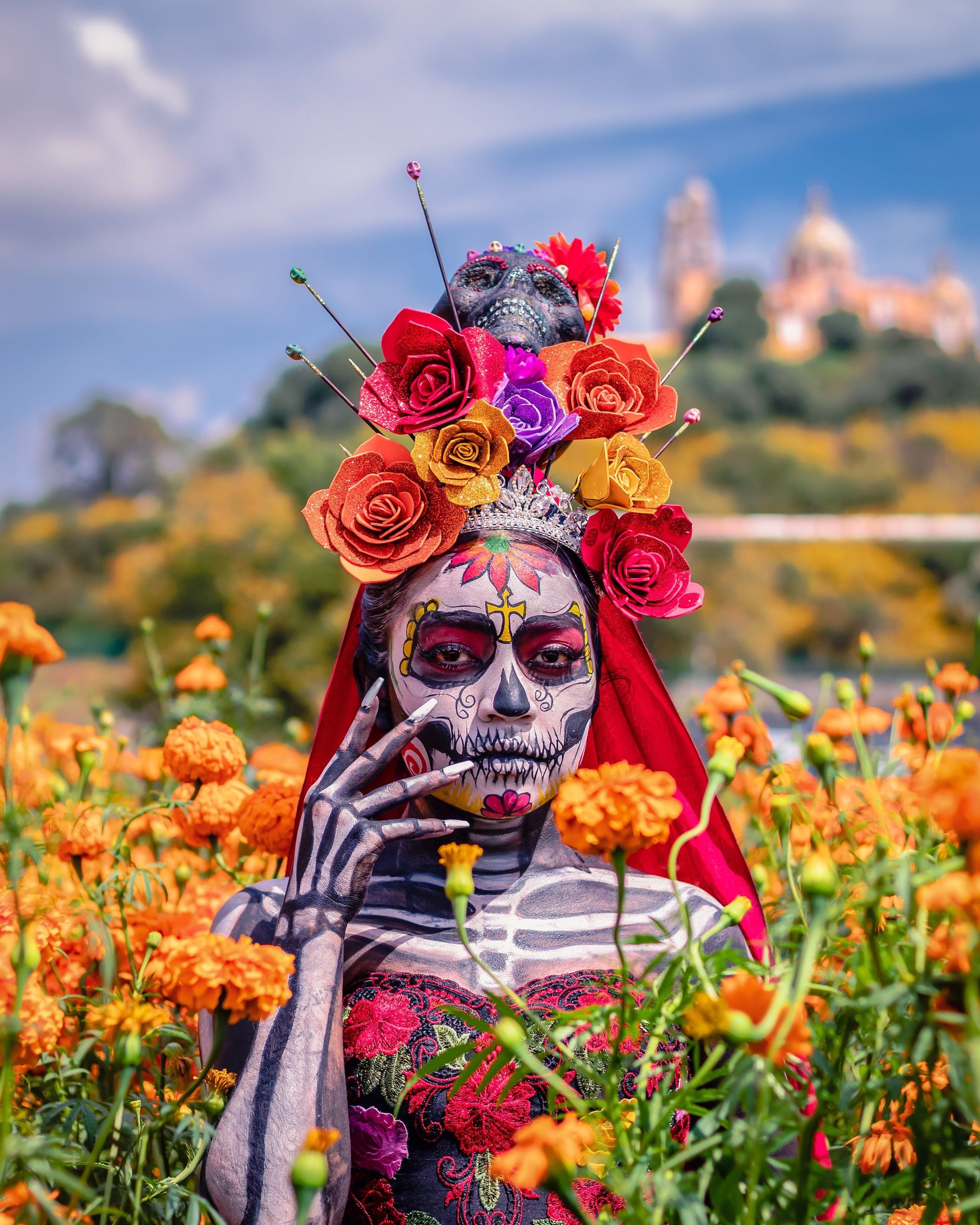
In Los Angeles
Los Angeles offers a vibrant celebration of Día de los Muertos with numerous events taking place around the city. At Gloria Molina Grand Park, the 12th annual Downtown Día de los Muertos features 19 ofrendas created by artists and community organizations. The Los Muertos 5K run through historic Olvera Street (where we go on our LA bus tour) is another notable event, offering participants a scenic route and post-race celebration. The 50th Annual Día de los Muertos Celebration is a yearly art exhibit at Self Help Graphics & Art and The Noche de Los Muertos at Hollywood Forever, a cultural landmark and another stop on our bus tour, is another must-see event, featuring more than 100 altars, live music, DJs, and Aztec dancers. =
